More than 500 years ago, Leonardo da Vinci opened up a new era in the representation and understanding of human anatomy with his famous anatomical drawings. His studies also provided the inspiration for the digital dissections shown here, created from tomographic images using the VOXEL-MAN 3D visualization system. Both versions show the anatomy in their very own aesthetic.
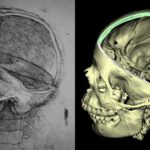
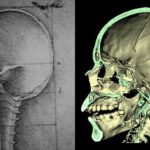 The skull sectioned (1489, RCIN 919057) | 2300 year old Egyptian mummy reconstructed from CT images (1989)
The skull sectioned (1489, RCIN 919057) | 2300 year old Egyptian mummy reconstructed from CT images (1989)
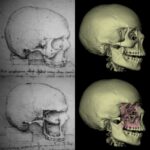 The cranium (1489, RCIN 919057) | —
The cranium (1489, RCIN 919057) | —
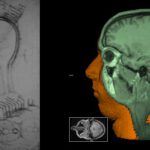 The layers of the scalp, and the cerebral ventricles (ca. 1490-1492, RCIN 912603) | 3D Reconstruction from MRI images (1989) | Note the small cross-sectional images at the bottom
The layers of the scalp, and the cerebral ventricles (ca. 1490-1492, RCIN 912603) | 3D Reconstruction from MRI images (1989) | Note the small cross-sectional images at the bottom
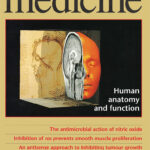 — | 3D Reconstruction from MRI images | Featured on the cover of Nature Medicine (1995)
— | 3D Reconstruction from MRI images | Featured on the cover of Nature Medicine (1995)
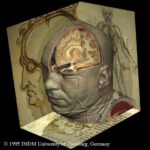 — | Head of the Visible Human (1995)
— | Head of the Visible Human (1995)
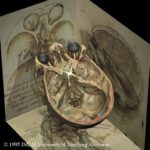 The cranial nerves (ca. 1508, RCIN 919052) | —
The cranial nerves (ca. 1508, RCIN 919052) | —
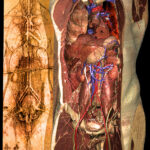 The cardiovascular system and principal organs of a woman (ca. 1509-1510, RCIN 912281) | Torso and internal organs of the Visible Human (2000)
The cardiovascular system and principal organs of a woman (ca. 1509-1510, RCIN 912281) | Torso and internal organs of the Visible Human (2000)
RCIN refers to the inventory number of the Royal Collection at Windsor Castle (United Kingdom).
References
- Karl Heinz Höhne, Leonardo meets VOXEL-MAN. In Medicine Meets Virtual Reality 17 Course Syllabus: Salon and The Well. Long Beach, CA, 2009, 25.
Back to VOXEL-MAN Gallery